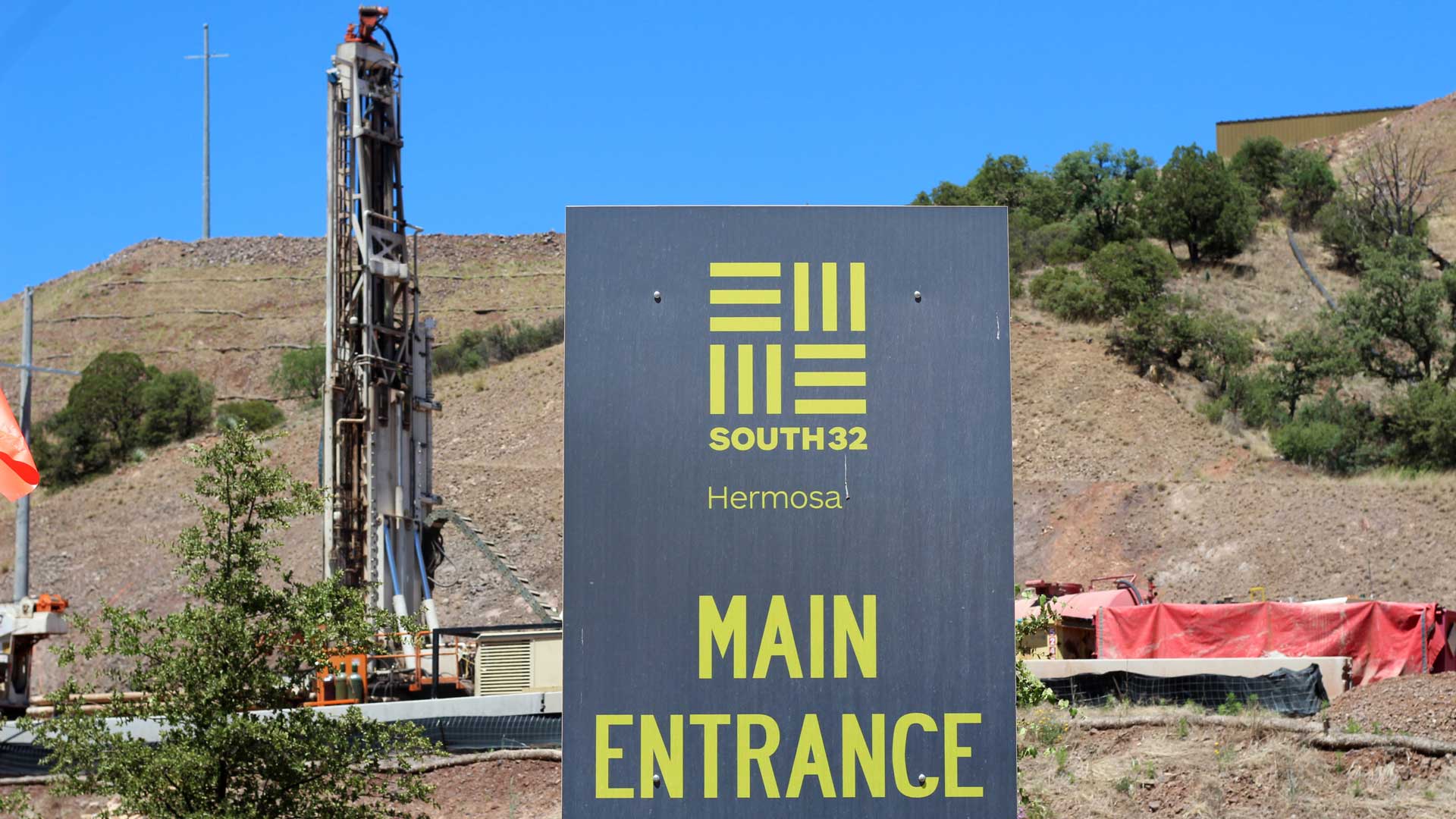 The entrance of the South32 Hermosa mine site, a critical minerals project that looks to source manganese and zinc.
The entrance of the South32 Hermosa mine site, a critical minerals project that looks to source manganese and zinc.
This article has been updated to clarify the health baseline assessment for the South32 Hermosa project.
The global metals and mining company South 32, recently announced a series of project developments as operations continue at the Hermosa project site in the Patagonia Mountains of Santa Cruz County.
In an effort to enhance community health transparency and collaboration with local public health institutions, South 32 will engage public health professionals to guide the community health assessment for the Hermosa critical minerals project.
The health baseline assessment will rely on existing data, as stated in an overview offered by the global consulting firm, Ramboll, provided by South 32.
The analysis states that it, “will rely on existing, publicly available public health and environmental data, project-specific studies provided by South32 generated to support project permitting and funding processes, and will not require the collection of new field, economic, public health, or biomonitoring data at this time.”
The collection of new or additional data will be determined if and when assessments are called for.
South32’s focuses on mitigating exposure to manganese and other minerals from the Hermosa project.
Melanie Lawson, communities principal with South32 said partnering with third-party public health organizations will ensure transparency and accountability.
To spearhead this effort, South 32 is working with the University of Arizona (UA) to finalize the scope of work for the assessment. Once the scope is finalized, the UA will conduct the assessment independently and select a team based on study needs.
The Hermosa critical minerals project is focused on mining for zinc and manganese, two metals considered vital to the transition to clean energy.
However manganese mining is also associated with long-term health risks, especially for children, according to the National Institutes of Health (NIH).
South 32 has enlisted the global consulting firm Ramboll to help guide the Santa Cruz County community health assessment.
A workforce development taskforce is also in progress to expand Santa Cruz County’s workforce for its Hermosa exploratory mining project.
The company states it could create over “1000 family-sustaining jobs” in the region.
Comprising community members from the Nogales Unified School District, AZ Cyber Initiative, Santa Cruz County Port Authority and other industries, the South 32 Hermosa Workforce Development Taskforce will identify educational needs throughout the community in hopes of training for employment opportunities.
Skylie Estep, human resources director for North America with South32 said the goal of the company’s workforce is to be reflective of the community it serves.
“Not just people who have experience in the mining industry but also people who have a long history and experience in the education space, in the intermediaries and community members as a whole,” Estep said.
A final investment is still pending for the South32 Hermosa project, but could include a $1.7 billion capital investment into Santa Cruz County.
Estep states that the increase in gross earnings and tax revenue from the Hermosa project will benefit the community.
“Because of the wages that we’ll pay our employees, we’re able to achieve that two and a half times the current household income in the community,” Estep said.
In May, the exploratory mining project that hopes to produce zinc and manganese, two critical minerals necessary to meet clean energy demand, began initial excavation for the main exploration shaft and ventilation shaft.
South32 states that the zinc resource identified at Hermosa, is one of the world’s largest undeveloped sites of the federally designated critical mineral.

By submitting your comments, you hereby give AZPM the right to post your comments and potentially use them in any other form of media operated by this institution.